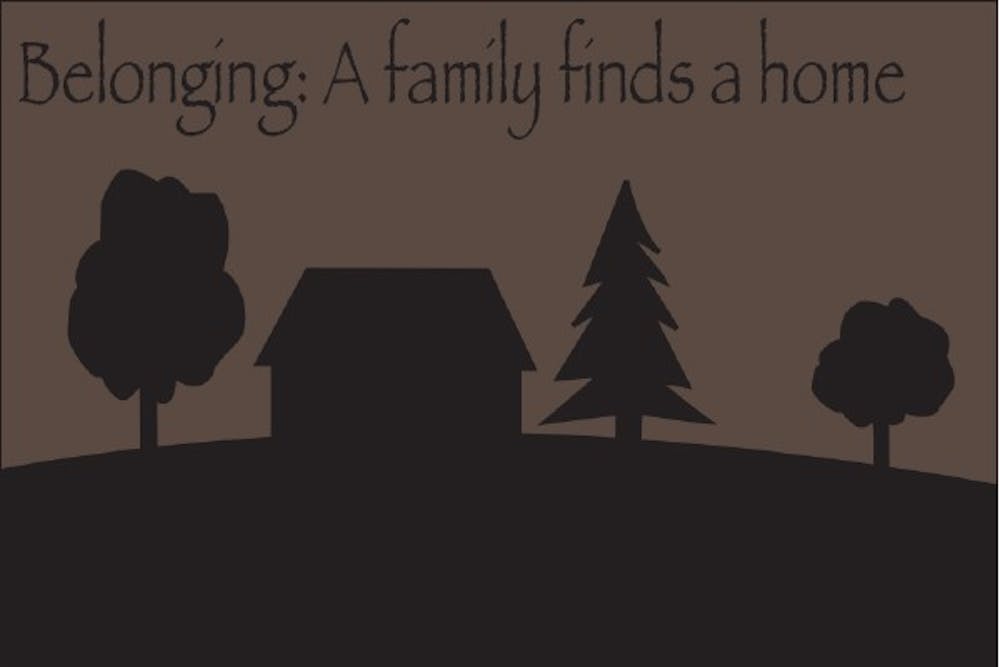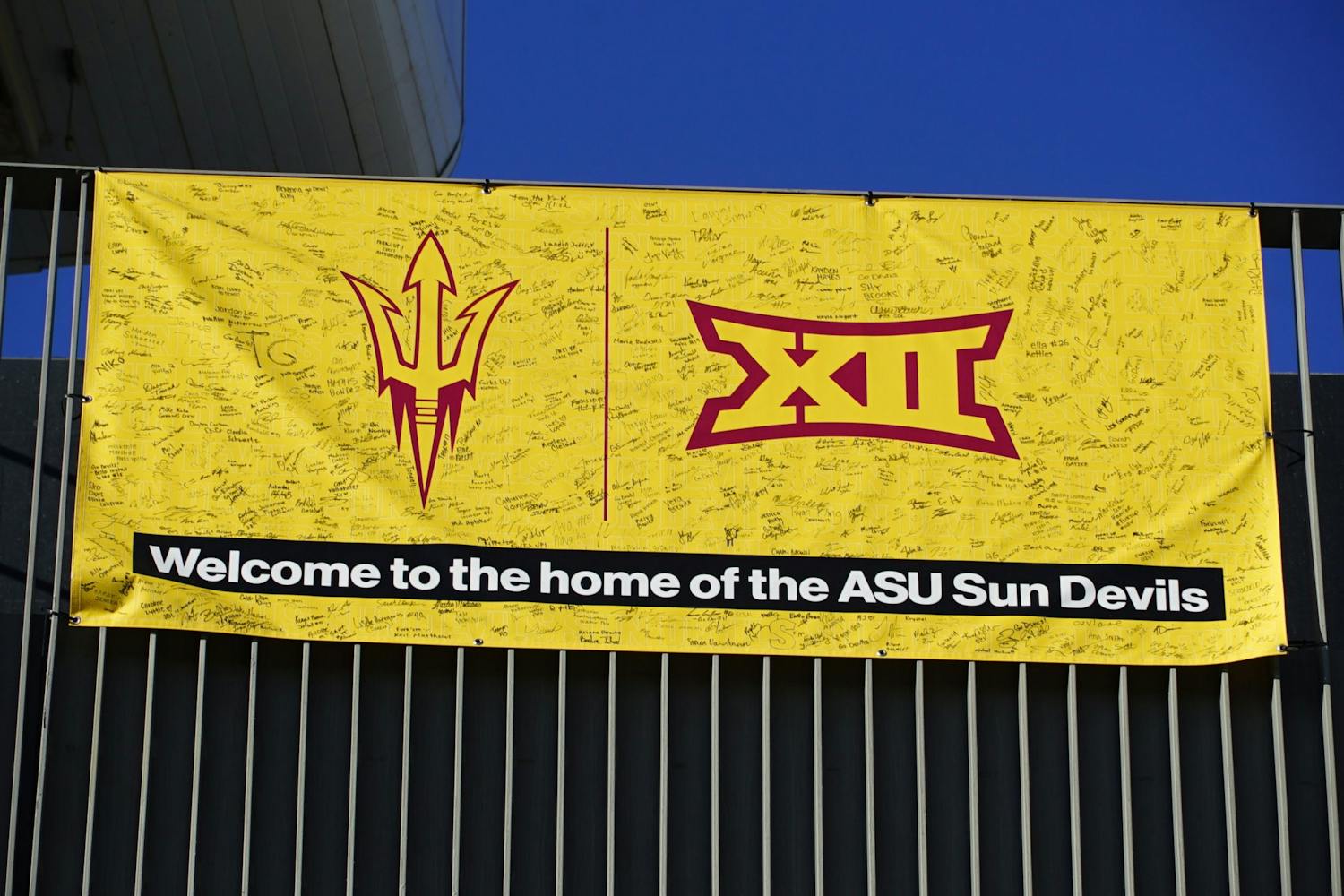 Graphic by Luu Nguyen
Graphic by Luu NguyenWhen Claudia Schulz pulled up at the house in south Phoenix, Martha Alvarez was standing on the sidewalk under the plum tree in the front yard, wiping tears from her round face. In the midday of an Arizona July, the heat was oppressive.
The two women were waiting for Martha’s husband, Juan Villagomez.
“It feels like everything was worth it,” Martha told Schulz.
That was it: everything. Everything Martha, a homemaker and mother, and Juan, a construction foreman with Suntec Concrete, had fought through for the house had paid off. All the mountains of paperwork. The three months of postponements from the lender.
Juan drove into the driveway, high sun gleaming off his silver truck packed full of moving boxes. He climbed out of the truck, a smile set in his wide, bearded face. He headed straight for Martha and embraced her.
Schulz, a realtor for Mandalay Homes, the company selling the house, handed Juan the keys.
He refused them, telling Schulz to give Martha the keys. When he bought the house, he told Martha it was for her – this was to be her moment, not his.
“Finally,” he said. “We finally have our own house.”
After Schulz left, Juan and Martha checked to see that their new environmentally friendly house was in good condition. They padded across the glossy, dark-wood floors in the narrow entryway and out into the wide, open common room, where the air was fresh and cool. They turned right, through the kitchen, between shiny-white countertops, dark cabinets and a black stove, silently awaiting use. They walked past the tall sliding-glass door to the backyard, which would cool the house in the summer and insulate it in the winter.
They pressed their feet into the non-allergenic gray carpet in the living room, soft and springy and new. They made sure everything was in order – non-toxic paint, dual-flush toilet to save water, solar panels on the roof, dual-paned windows to keep the heat out.
They would never have to suffer through hot summers like they did before. They wouldn’t have to deal with financial insecurities like they did before, either.
This was their house now — clean, green and affordable.
Affordability
Martha Alvarez, 51, grew up in a central Mexico village. She met Juan at a dance with her friends on a California vacation when she was 26.
Juan is seven years younger than Martha. He grew up in Guanajuato, Mexico, but he’s been a U.S. resident since he was 16. He married Martha in Mexico a year after they met. All three of their children – Alvaro, 23, Saul, 21, and Elizabeth, 19 – were born in Mexico. When his kids were young, Juan traveled often from Mexico to California, where he worked at a paint factory and a Mexican restaurant.
When Juan got construction work in Arizona and began putting in overtime seven years after their marriage, the family moved to the United States. The transition was hard: Alvaro had completed first grade in Mexico and struggled with English. They were all homesick. But these days, there is no going back, Martha says – fear of drug-cartel violence in Mexico keeps the family in Arizona.
The Villagomez family made a home in Arizona. Their first house was a spacious two-story on 25th Avenue in south Phoenix. It had five bedrooms and three bathrooms. On the back lawn, the family planted a peach tree, two lemon trees and a big fig tree. They thought this home would be theirs forever.
But about eight years ago, Martha lost her jobworking in the cafeteria at the Tempe Union High School District, where she had been making $22,000 a year. Her oldest son started college not long afterward.Juan’s construction company no longer offered overtime work. The money dried up. Juan and Martha tried to negotiate with their mortgage company and learned they were in a Catch-22 – to keep their house, the company told them, Juan would have to lose his job. He wouldn’t.
Many Americans live in “energy poverty,” in which at least 25 percent of their gross income pays for energy, says Arizona State University senior sustainability scientist Harvey Bryan. Green houses with higher energy efficiency cut these costs substantially: the Villagomez family utility bill declined from $140-200 a month to a March 2014 bill of $71.21.
Affordability includes both the sales price and the cost to operate and maintain the home, says Phoenix consultant Philip Beere, founder and president of Phoenix-based G Street. A more durable home requires less maintenance, and an energy-efficient home costs less to operate and is more comfortable to live in.
Nevertheless, people who qualify for affordable housing have less access to green housing.
The Department of Housing and Urban Development says homebuyers qualify for affordable housing assistance if they pay more than 30 percent of income for housing. In Arizona, a person must earn more than double the minimum wage of $7.90 an hour to afford a two-bedroom apartment without it costing more than 30 percent, according to the 2014 report from the National Low Income Housing Coalition, a low-income housing advocacy group.
Many experts agree a common myth persists: green housing is more expensive to build than standard housing. In fact, it isn’t.
Although affordable green housing is gaining some traction in the United States, it faces significant hurdles reaching lower-income consumers. First, many low- to moderate-income people can only afford rental housing, which is more difficult to make green. Second, many aren’t aware of the savings a greener house can provide. Because of that, they aren’t demanding green housing, so the market isn’t providing it.
What it comes down to, experts agree, is that Phoenix lacks green housing because lower-income people don’t demand it. Many lower-income people are more concerned with surviving day-to-day, Bryan says. Green housing is not a priority – and part of that is because many people don’t understand the energy savings it brings. What keeps many people from having access to green homes is not that they’re unaffordable, but rather that there is little demand.
Builders can’t just construct a green home. They must also educate buyers and take advantage of marketing green – and do this accurately and consistently, Beere says.
Despite roadblocks, green housing is slowly gaining a foothold in the United States, says Joe Keeper, a developer with Native American Connections, a Phoenix nonprofit that develops affordable green rental housing.
For two weeks after they left, the Villagomez family returned regularly to their old house. They watered the fruit trees. They watched for vandals. Finally, Juan called the mortgage company and asked them to lock the back gate so no one could get in. One day, they showed up and the gate was locked. The safety of the house assured, the Villagomez family stopped visiting the home they loved.
Rental roadblocks
In December 2010, the Villagomez family left their dream home and moved into a rental house on 24th Street.
One June, Juan arrived home from work to discover the broken air conditioner. For three days, the family endured the summer heat: windows flung open, fans whirring. It was worse inside than it was out. Juan started going to the library, because it was cool there. At night, it was so hot he couldn’t sleep.
Rental housing felt transitory. The carpets were old. The air conditioner smelled. The utility bills were high. Martha feared the rent would be raised. It took a long time for the landlord to fix broken, inefficient appliances, such as the air conditioner.
Energy efficiency is a key focus in green housing because the energy buildings use contributes directly to greenhouse gases that fuel climate change, which, according to the United Nations Intergovernmental Panel on Climate Change, is already beginning to damage the planet. In the United States, homes emit 25 percent of the nation’s carbon dioxide, Bryan says, or five of the 20 tons the country emits per person each year.
Yet lower-income people don’t have as much access to green housing because they can often only afford rental housing and they aren’t aware of how a green house can save them money, Bryan says.
Renting is a tricky business: Landlords don’t pay the energy bills, so they have no incentive to make the properties they own more energy-efficient, Bryan says. Tenants don’t stay long enough to want to invest in making the property greener.
Keeper, the developer for Native American Connections, says the nonprofit keeps rent at its newest green multifamily project between $414 and $801 per month, with an average of $609 a month for a two-bedroom unit. Native American Connections finances the projects it builds with the Low Income Housing Tax Credit, a federal subsidy that helps finance affordable rental housing. As the city upgrades energy code requirements, Keeper predicts, rental housing will naturally become greener.
After two years renting, the Villagomez family decided it was time. They wanted a house. A place where they belonged.
Defining green
If you ask people, even experts, to define green housing, you open yourself up to varied opinions and a lot of disagreement, Beere says. It’s best to define “green,” he says, by the different recognized industry codes and ratings. Many municipalities require energy efficiency standards in new construction. The trend, he says, is toward mandating more energy efficiency.
There are different municipal and international standards of greenness that all homes, private and government-funded, must be built to, and every few years those standards rise. In 2012, the International Code Council increased the stringency of many different energy requirements, such as heating, ventilation and air conditioning insulation.
Several national codes rate how green a home is, such as the Leadership in Energy and Environmental Design – or LEED – code, the HERS index, the National Green Building Standard, Energy Star and others. If you were to break down all the codes into their main components, you’d find overlapping definitions of green homes: healthy, water- and resource-conserving, energy-efficient homes, with fewer pollutants and toxins in the air and less energy usage than conventional homes.
In reality, any green home should be just as affordable as any traditionally constructed house of the same size and type, Beere says. “It’s no longer like it was seven years ago when it was truly too expensive,” he says. “Now industry standards really have caught up. … Green homes should be available to everyone.”
Developers can decrease initial costs with smart building, Bryan says. For example, costly dual-paned windows and better wall insulation allow the builder to install cheaper appliances – such as a smaller air conditioning unit that’s combined with the heater. The extra cost of the windows balances out the decreased cost of the air conditioning unit, making the initial building costs no more than those of a standard home.
Green housing isn’t without its detractors. State Sen. Chester Crandell, who says he does not see conclusive evidence that carbon dioxide emissions are causing climate change, recently authored a failed bill banning municipalities and counties from mandating green buildings. Companies producing and marketing green products profit from required green building codes, he says, and the government shouldn’t control what goes into homes. Electricity companies pay generators a fixed rate, Crandell says, and if homes use less electricity while companies pay the same amount, homeowner energy rates will rise.
“In my opinion, this is used as a forced marketing tool. … It shouldn’t be mandated,” Crandell says. “I offered the bill simply to protect the rights of the homeowner.”
Finding a home
One day, Juan Villagomez heard on the radio that there was an affordable housing program at 16th Street and Southern Avenue. He drove by, looked at the homes in the subdivision and fell in love. The new houses were environmentally friendly and affordable. The houses were in Gordon Estates, which used to be a foreclosed subdivision made up of run-down houses and empty lots.
In Maricopa County, which covers metro Phoenix, less than 10 percent of homes are green, says Edmundo Hidalgo, president and CEO of Chicanos Por La Causa, a nonprofit that helps the Hispanic community in Phoenix find housing. The city has made efforts to offer more green housing, however.
One example is the Neighborhood Stabilization Program – the one Juan heard about on the radio. The city program, funded federally through the U.S. Department of Housing and Urban Development, transforms foreclosed, abandoned properties into green and affordable homes, says Jesse Garcia, who runs the program.
Beere consults with builders and developers to meet or exceed green standards, ratings and codes. Beere consulted on the Gordon Estates project to help build 14 new green houses. The city keeps the homes affordable because its goal is to help people with moderate to low incomes own homes, as opposed to the goal of a private developer, which is more often than not to make money. That means the city won’t need to sell the house at the higher market price, because the home is available specifically for people who need affordable housing.
Juan approached Chicanos Por La Causa, and the nonprofit connected Juan to a lender. Martha and Juan got in touch with their realtor and Claudia Schulz from Mandalay Homes, the company that partnered with the city of Phoenix to develop the subdivision, and began the fight to buy their home.
There was a lot of paperwork. Everything took longer than expected; the city’s process to prove the family could buy the house before providing a down payment was new to the lender, and every time they hoped to sign the papers at the titles office, he was unprepared. It took three months until they finally signed the papers.
The stress and the struggle didn’t matter once Juan and Martha signed the closing documents. They’re forgiving people and held no grudge against the slow-moving lender. They finally had their own house. That was what mattered.
Living green
In an English as a Second Language class, Martha Alvarez learned the importance of greenness. Her class was next door to her daughter’s preschool class, and Martha’s teacher advocated environmental consciousness. Recycle plastic bags. Don’t drink from water bottles. Martha found herself becoming more environmentally aware – so as soon as she found out the house at Gordon Estates was green, she knew she wanted it. Martha and her family agree: low- to moderate-income earners should explore green housing because it’s more affordable. (Juan makes between $76,000 and $100,000 a year.) To make this happen, she says, sharing information through different media is important.
Now, the family home is a hub of activity. Elizabeth recently graduated high school and is studying at South Mountain Community College to be an art teacher. Alvaro, a mechanic for Chevrolet, will become a father in February, and Saul is in his third year of college. Martha studies, too, taking English and ceramics classes at the community college. Juan works at Suntec Concrete, but he’s home in the evenings; “he always is here for dinner with us,” Martha says.
On a Saturday morning in March in the new house, Elizabeth makes scrambled eggs with ham in the kitchen. Martha and Juan enter, carrying groceries. The television plays Spanish infomercials.
The tall sliding glass patio door leads to an unfinished backyard. There’s a section of back patio the family built from colored brick to match the driveway out in front. There are a few potted flowers. Mostly the backyard is just dirt. An empty canvas, for now.
Martha and Juan can’t plant a lawn here – it requires too much water to be green – but still, they’re going to make their backyard beautiful. They may even plant fruit trees.
Reach the writer at mollybilker@msn.com.




